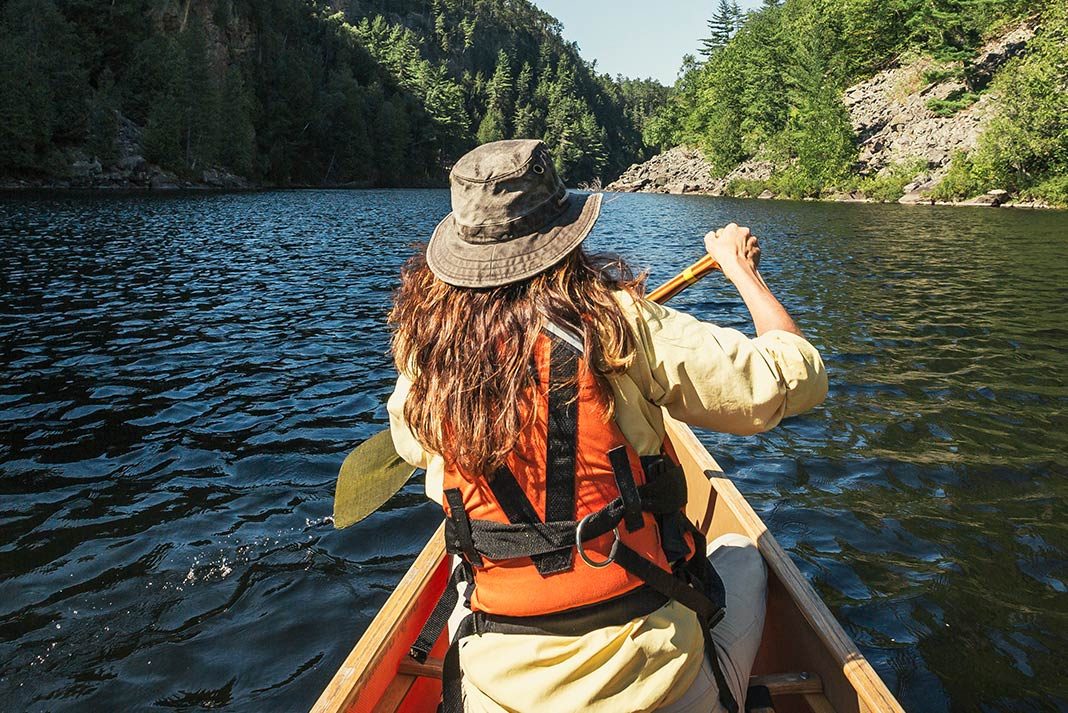When it comes to the question of whether to sit or kneel in a canoe, times are changing. Tradition always dictated that kneeling demonstrated proper technique—sitting was sloppy.
Innovation, on the other hand, has resulted in technique that has canoeists actually paddling stronger while seated. It’s not quite as easy as just changing positions, though. You’ll need to modify your paddling style to match your seated stance for added power, efficiency and comfort.
Which is more stable?
Proponents of kneeling usually argue that it’s more stable than sitting. This isn’t always true. Lower the seat and there’s no need to kneel. Properly mounted tractor seats are installed with this in mind. Tractor seats also force paddlers to keep their center of gravity over the center of buoyancy of the boat, eliminating balance issues related to sliding to one side on a bench seat.
Which provides more power?
Kneelers who claim they get more power likely do so by leaning forward and planting their paddles further ahead—reach afforded by their kneeling position. However, when paddling most canoes, this is less efficient since it causes the bow of the canoe to porpoise in the water.
Using the right paddle
The shorter, faster stroke cadence of the seated paddler lends itself to bent shaft paddles. Because tractor seats are lower than bench seats, a shorter paddle is required. Bent shaft paddles also demand less reach because of the angle the blade enters the water.
Those quick to criticize bent shaft paddles for their clumsiness when it comes to steering strokes will find that switching sides is actually easier seated than while kneeling because of the stability factors mentioned above. Replace a pry, which is ineffective with bent shaft paddles, by changing sides (hut!) and doing a draw—generally more ideal than a pry anyways because it’s more powerful. Pries can also destabilize the canoe, which can be an issue with the lower freeboard boats commonly designed for this style of paddling.
Engaging your lower body
The shortened overall height of this more modern style of boat not only reduces wind sheer, it also allows seated paddlers to comfortably reach over the sides as well as brace thighs and knees beneath the gunwales.
Bow paddlers should rest their thighs against the sides of the canoe and feet against the air chamber in front of them. Boats with tractor seats often have an optional foot brace for stern paddlers. Engaging your lower body creates the feeling of pulling the boat forward across the water rather than pushing the water backwards, behind the canoe, as is the case with straight shaft paddling common to the traditional kneeling style.
Greater comfort
Perhaps one of the greatest benefits to paddling from a seated position is the added comfort. No more sore knees, no more pins and needles. Marathon canoeists paddle almost exclusively seated with their lower bodies braced to maintain comfort over long distances while still generating maximum power.
Kneeling remains the best choice for classic soloists and paddling most technical whitewater, but if you don’t want to kneel, learn to paddle properly when seated. Just like kneeling paddlers, in order to maintain an efficient stroke, seated paddlers must sit up straight and generate power by rotating the torso rather than relying entirely on arms. They key here is not to slouch in your seat.





Interesting article. Thanks for posting.
Not sure I agree with the conclusion of this article, but it was well thought out! I graduated from sprint racing where you kneeled on one knee and you paddled exclusively on your chosen side. Racing C-1 could see one taking 60 strokes / minute all the while tracking a straight course. Recreational canoes on the other hand are designed for comfort and ease of use, although there are pro boats that “sit and switch” for very long distances.
Great article. I have been involved in selling canoes for a living for over 45 years. Times have changed in design and materials but also in the seating choices. Bucket seats mounted lower in the canoe with the addition of a foot brace allows for a very stable paddling position. Most people’s opinions about canoeing has been formed by exposure to canoeing at summer camps that only have traditional bench seats.
More modern canoe designs, like Clipper, have added foot braces for the stern paddlers. This makes you more comfortable and more efficient. Kayaks will almost always have foot braces, so why shouldn’t canoes?